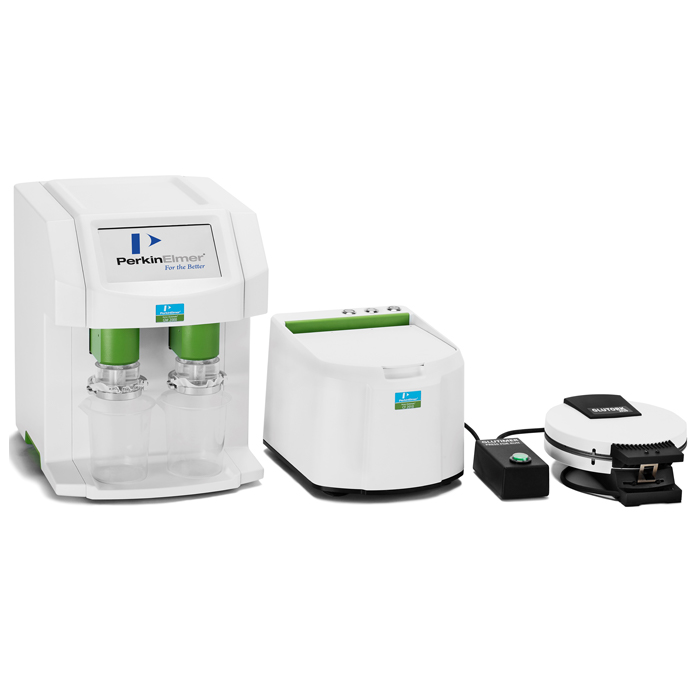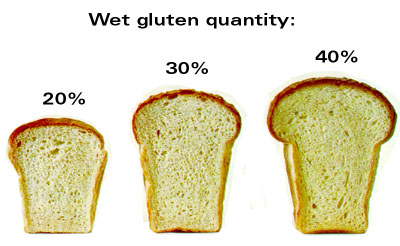Glutomatic

Glutomatic - The world standard for gluten quantity and quality determination
- AACC 38-12.02
- ICC/No. 137/1, 155 & 158
- ISO 21415-2, 21415-4
- GBT 5506.2, 5506.4
- IRAM 15864
- CCAT Method 13
When baking bread and producing noodles or pasta, the flour gluten content and strength will determine the quality of the finished product. The Glutomatic® System is the world standard for determination of gluten quantity and quality.
The effect of gluten quantity and quality in the flour used for breads, cookies, crackers and pasta is dramatic. In the photo of bread loafs above it is clear that the wet gluten quantity of the flour strongly influences bread volume. Using the Glutomatic® System you will be able to determine the baking quality of wheat and flour.

Features and benefits
- Determine gluten quantity and quality - Improve the quality of your finished products.
- Official world standard - Ensure that trade contracts are fulfilled.
- For flour and grain - Determine gluten characteristics both for wheat and flour.
- Measure true gluten - Only the Glutomatic® can measure true gluten. In a number of situations protein content is not indicative of gluten characteristics.
Applications
Breeding
By measuring the functional properties of protein at an early stage - without having to extract flour - breeders can select the appropriate wheat classes for further breeding and refinement.
Grain trade and handling
The ease of use and the speed of the method enable the user to classify the incoming wheat based on gluten quantity and quality, essential for maximizing trade margins and supplying products suitable for varying end-use purposes.
Flour Milling
Millers can blend flour to meet end-user demands while not selling high quality product at a low price thereby improving operating margins. With the Gluten Index, the Wet Gluten Content and the Falling Number® analysis results available, millers can quickly predict the final baking quality, reducing the requirement for test baking.
Baking
The gluten properties and structure are important to:
- Form elastic dough
- Retain gas during fermentation and baking
- Allow expansion
- Carry expansion
- Retain the shape of loaf
As baking quality is both related to starch and protein characteristics, a combination of the results from the Falling Number® and Glutomatic® tests can be used to predict the baking quality. With the Gluten quality and quantity information at hand, bakeries are able to use the most cost effective grade of flour while still meeting end user quality. Maximizing the use of high quality flour and minimizing addition of expensive vital gluten results in substantial savings.

